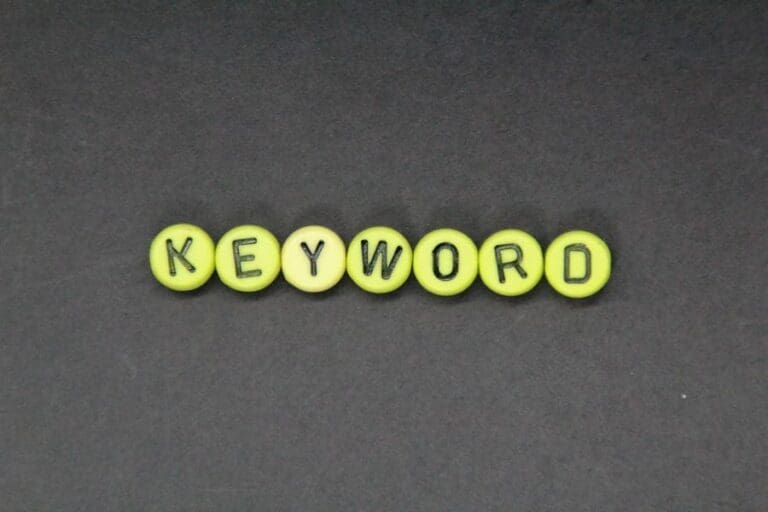
In the competitive world of online advertising, Google Ads stands out as one of the most effective platforms to reach your target audience and drive conversions.
However, maximizing the ROI of your Google Ads campaigns requires a strategic approach and ongoing optimization. This blog post presents 16 actionable tips that will help you optimize your Google Ads campaigns, achieve your business goals, and maximize your return on investment.
From effectively implementing negative keywords to leveraging ad extensions, optimizing ad copy for clarity and relevance, and utilizing Google Ads automation tools, this comprehensive guide provides you with the knowledge and strategies to transform your Google Ads campaigns into revenue-generating powerhouses.
Want to brainstorm with us on new ways to scale your business with YouTube Ads (and other performance video platforms)?
Book a free YouTube ad brainstorming session with us here: 👇
1. Effectively implement negative keywords
Negative keywords are essential for preventing your ads from showing for irrelevant searches. These keywords are essentially “disqualifiers,” ensuring that your ads only appear for searches that are highly relevant to your products or services.
To effectively use negative keywords, identify common words or phrases that are unlikely to lead to qualified leads. For instance, if you sell high-end smartphones, you might exclude keywords like “cheap,” “budget,” or “generic” to avoid attracting users who are not willing to invest in high-quality devices.
Regularly review and update your negative keyword list to ensure that you are not excluding valuable searches. Utilize keyword research tools to identify relevant negative keywords and analyze your campaign data to identify which negative keywords are contributing to improved performance.
2. Strategically utilize keyword match types
Keyword match types determine the level of specificity for which your ads will trigger. Understanding the nuances of each match type is crucial for optimizing your campaign’s targeting.
Broad match: Broad match keywords capture a wide range of searches, including those that may not be relevant to your product or service. While it offers broad reach, it also increases the risk of showing ads to unqualified users.
Phrase match: Phrase match keywords target searches that include the exact phrase you define, but they may also include variations and synonyms. It provides more control compared to a broad match, but it still allows for some flexibility.
Exact match: Exact match keywords only trigger ads for searches that match the exact phrase you define, including every word in the exact order. It offers the highest level of control, ensuring that your ads are only seen by users who are searching for exactly what you offer.
Choose the appropriate match type for each keyword based on your campaign goals and the level of specificity you need. For instance, a broad match can be effective for brand awareness campaigns, while the exact match is more suitable for campaigns targeting specific products or services.
3. Leverage ad extensions to enhance ad visibility
Ad extensions are valuable additions to your ads that provide additional information to potential customers. They can be displayed below or beside your ad text, making your ads more eye-catching and informative.
Sitelinks allow you to display multiple links to different pages on your website, directing users to relevant landing pages based on their search intent.
Callouts are short text snippets that highlight key features or benefits of your products or services. They can add more context and entice users to click your ads.
Promotion extensions are a type of ad extension that allows you to highlight current promotions or offers on your Google Ads campaigns. They can be displayed below or beside your ad text, increasing the visibility of your promotions and potentially driving more clicks and conversions.
Utilize a mix of ad extensions to maximize the impact of your ads. Experiment with different combinations and analyze which extensions generate the most engagement and conversions.
4. Experiment with different ad formats
Google Ads offers various ad formats, each with its own strengths and suitability for different audiences and campaign objectives. Experimenting with different formats can help you discover which ones resonate best with your target audience and drive conversions.
Text ads: Traditional text ads are the most common format and are effective for conveying basic product or service information.
Display ads: Display ads are visual advertisements that appear on websites, apps, and social media platforms. They can be images, videos, or GIFs and are ideal for brand awareness and targeting specific demographics.
Video ads: Video ads are highly engaging and can effectively capture attention and convey product information. They are suitable for showcasing products, services, or brand messaging.
Identify which ad formats align with your campaign goals and target audience. Regularly test different formats and optimize your campaigns based on performance data.
P.S. If you missed out on our post about the benefits of using creatives in all three aspect ratios—horizontal, square, and vertical—in your video campaigns, go check it out here!
(Spolier alert – this approach can help you boost conversions by up to 20%!)
And if you are curious how to generate all those ad variations without spending too much time or effort on them, here is a playbook that will make your life easier and your video ad campaigns more effective.
5. Optimize ad copy for clarity and relevance
Your ad copy is the first interaction potential customers have with your brand, so make sure it is clear, concise, and compelling. Use strong verbs, persuasive language, and relevant keywords to capture attention and drive clicks.
Clarity: Use simple and easy-to-understand language that avoids jargon or technical terms.
Concisness: Get to the point quickly and avoid unnecessary fluff.
Compellingness: Use strong verbs and descriptive language to evoke emotions and interest.
Relevance: Align your ad copy with your target audience and their search intent. Use keywords naturally and ensure that the copy matches the overall message of your campaign.
Regularly review and refine your ad copy based on performance data. Analyze which ad variations are generating the most clicks and conversions.
6. Use compelling call-to-actions
Clear and concise: Your CTAs should be clear and concise, telling users exactly what you want them to do.
Action-oriented: Use strong verbs in your CTAs to encourage action.
Time-sensitive: Consider using time-sensitive CTAs, such as “Shop Now” or “Limited Time Offer,” to create urgency.
P.S.S. Are you sick of “click now” CTAs that aren’t working?
Then, discover what makes a great CTA and how to apply it to YOUR business. We reveal 15 CTA formulas you can apply to any business to boost conversions. Find them out here.
7. Track and analyze campaign performance regularly
Google Ads reporting tools: Utilize Google Ads’ built-in reporting tools to track key metrics such as impressions, clicks, conversions, and cost-per-acquisition (CPA).
Data-driven insights: Analyze your campaign data to identify trends, identify areas for improvement, and optimize your campaigns accordingly.
Set benchmarks: Establish benchmarks for key metrics to track your campaign’s progress over time.
8. Utilize Google Ads automation tools
Smart bidding: Leverage Smart Bidding strategies, such as Target CPA, that automate bidding for you based on your campaign goals and data.
Campaign management tools: Utilize campaign management tools to automate tasks like ad scheduling, budget optimization, and negative keyword management.
Experimentation tools: Leverage experimentation tools to test different strategies and configurations without disrupting your ongoing campaigns.
9. Optimize landing pages for conversions
Clear and relevant: Ensure your landing pages are clear, relevant, and aligned with the messaging and keywords in your ads.
Convenient navigation: Minimize friction by providing clear navigation, easy-to-find call-to-actions, and a seamless user experience.
Strong CTAs: Use strong and compelling CTAs that encourage users to take the desired action, such as making a purchase, signing up for a service, or scheduling a consultation.
10. Segment your audience for targeted campaigns
Demographics: Segment your audience based on demographic factors such as age, gender, location, and interests.
Behavioral data: Segment your audience based on their online behavior, such as browsing history, past purchases, and engagement with your website or social media pages.
User intent: Segment your audience based on their search intent, such as whether they are in the research, consideration, or purchase stage of the buying cycle.
11. Utilize remarketing to re-engage past visitors
Target past visitors: Show ads to users who have visited your website or interacted with your previous ads.
Personalized messaging: Use personalized messaging to remind past visitors of your product or service and entice them to return.
Offer incentives: Consider offering incentives, such as discounts or exclusive offers, to encourage past visitors to convert.
12. Monitor ad competition and adjust strategies accordingly
Keyword research: Monitor keyword competition and identify opportunities to improve your ad positioning and performance.
PPC spy tools: Utilize PPC spy tools to track competitor bids, ad copy, and landing pages.
Adjust bidding strategies: Adjust your bidding strategies to account for changing competition and market conditions.
13. Leverage Google Ads experiments to test different strategies
Create experiments to test different ad variations, bidding strategies, and landing page configurations.
Monitor the results of your experiments to identify the most effective strategies.
Implement the winning strategies across your campaigns to maximize performance.
14. Utilize Google Ads support resources for guidance
Google Ads Help Center: Access comprehensive documentation, tutorials, and troubleshooting guides on Google Ads.
Community forums: Engage with the Google Ads community to ask questions, share experiences, and learn from others.
Expert advice: Consider consulting experienced PPC professionals for personalized guidance and optimization services.
15. Collaborate with experienced PPC professionals for expert guidance
Benefit from continuous optimization: Benefit from ongoing optimization and support as your business and campaign goals evolve.
Real-time monitoring and adjustments: Leverage real-time monitoring and adjustments to ensure your campaigns are always aligned with current market conditions and competitor activity.
Unlock potential: Unlock the full potential of your Google Ads campaigns by tapping into the expertise and experience of seasoned PPC professionals.
Save your time and effort: Save you time and effort by outsourcing the complexities of Google Ads campaign management to experienced professionals.
By collaborating with experienced PPC professionals, you can significantly enhance the performance of your Google Ads campaigns, achieve your business goals, and maximize your ROI.
Remember, Google Ads is a powerful tool, but it requires careful planning, strategic implementation, and ongoing optimization to achieve optimal results. By following these tips and collaborating with experienced PPC professionals, you can effectively harness the power of Google Ads to drive growth for your business.
Want more content like this?
Don’t miss out on the latest news and updates from the world of Direct Response advertising! Subscribe to our newsletter today 👇

Bruno Vidic, Director of Media Buying
Having managed campaigns for some of our most well-known clients, Bruno has over $40M USD in profitable ad spend behind his belt. His experience and his insatiable drive to find better ways to get clients results that exceed expectations help him steer the Media Buying team at Inceptly and make him our go-to guy for Media Buying know-how.
Want to brainstorm with our team on new ways to scale your business with YouTube Ads (and other performance video platforms)?
Join us for a free YouTube ad brainstorming session:
Like this post? Let's continue the conversation!
Get in touch with us by shooting us a quick email or tagging us on LinkedIn or Instagram, and sharing your thoughts. Your feedback helps us keep our blog relevant and interesting.
Get Our Newsletter
Need Help?
Get in touch with us for an insightful evaluation of your ads + actionable tips to help amp up your direct response revenue









